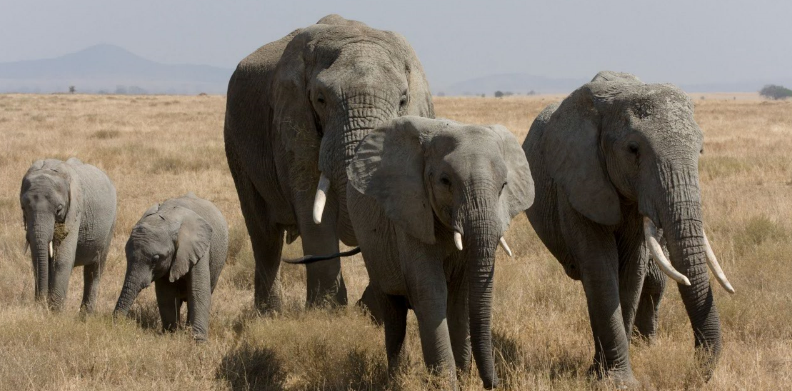A mother elephant watches her calf play in the shallows of a pond with her young friends. Mother can see that her daughter is gaining strength and gaining wisdom about how the world around her works. Mother is very proud of her calf and her calf is the most important thing to her in the entire world. The calf s grandmother is also nearby and watches over her daughter and granddaughter and their entire herd. She is the matriarch, the leader of the group and the one the herd depends on to know where to find food, water and safety. The bonds and devotion between these three females of three generations are impenetrable, their love unbreakable.
Suddenly, shots tear through their family, breaking the gentle hum of nature into screams of fear and pain. The matriarch has been shot by poachers for her large ivory tusks. No longer will she be able to care for her family, nor her herd; they all rush to her side to try to help her, they watch her die, they mourn, they cry, they are in deep pain from losing her and they are unsure of how to survive.
This horrific scene is being played out routinely throughout numerous countries in Africa and Asia. In 2011, 25,000 elephants were killed for their ivory, the highest numbers in a decade.
Elephant behavior, societies and ecology have now been studied and documented in detail by ethologists, scientists who study the behavior of animals in their native habitat, who have devoted not only their entire careers but their entire lives to understanding and protecting elephants. From them we have learned about the importance of the head female elephant of each herd, who is the oldest and wisest, and that she is the one who guides her herd to lesser known water sources during drought, to food when it is in short supply and keeps young male elephants in line as they learn about their own strength and enter their first musth, which is a stage in their annual cycle during which they are increasingly aggressive due to heightened testosterone levels and primed to mate. In the past matriarchs exercised their control over young males to keep their herds safe but as the human population continues to explode and invade the land of elephants, their abilities to control young males are also important for human safety. It is these beautiful and wise adult females that poachers like to target because their tusks have also grown with age. When a matriarch is murdered, the society of her herd is shattered, sometimes beyond repair.
Elephants are quite beguiling, with their big ears, gentle eyes, deep intelligence and amazing family love and bonds; they surely are one of the most beloved animals in the world and critical to the ecological health of their native habitats. Yet they are threatened with extinction. How could we do this to them? In the name of greed, fashion and showing off, we as a species have brought them to the brink of extinction. Listed as an endangered species by the IUCN, purchase of ivory is illegal internationally.
In a confusing turn of events, Chinese trader legally bought 73 tons of ivory from several African nations in 2008. Many conservationists and government officials thought this would curb poaching but instead poaching and smuggling have both soared. In part, this is because it has become easier to launder illegal ivory, with ivory salesmen stating that the ivory they are selling is from the stockpiles that were purchased legally in 2008. In addition, many people are now under the impression that the global ivory trade ban of 1990 has been lifted due to this large legal purchase. Of the top ten Asian countries with the most seized shipments of ivory from 1989 – 2011, China nearly doubles the next most egregious country, Thailand. Because the buying has increased, the death toll rises, the suffering immeasurable and ecological collapse more imminent.























